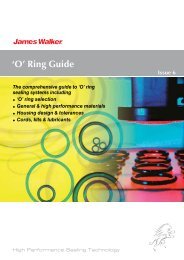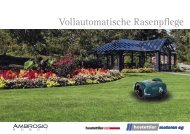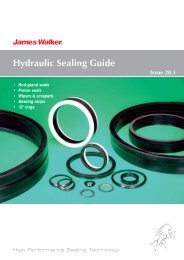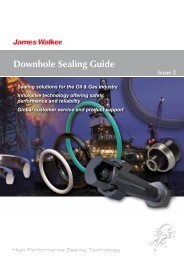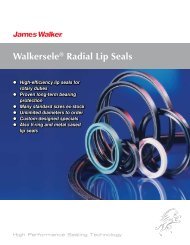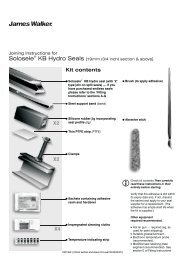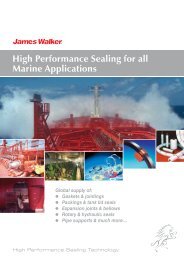Comflex® Rubber Expansion Joints Engineering Guide
Comflex® Rubber Expansion Joints Engineering Guide
Comflex® Rubber Expansion Joints Engineering Guide
You also want an ePaper? Increase the reach of your titles
YUMPU automatically turns print PDFs into web optimized ePapers that Google loves.
Installation Instructions for Type 80<br />
1. Protective covers<br />
These serve to protect the beading sealing surface<br />
against mechanical damage and must only be<br />
removed directly prior to assembly. If removal for<br />
the purpose of inspection is necessary, the protective<br />
covers must subsequently be bolted tight.<br />
2. Welding, soldering and brazing on the lined<br />
components is not permitted as this can damage the<br />
high-quality lining and give rise to the release of<br />
highly toxic gases.<br />
3. The use of seals between PTFE/PTFE sealing faces<br />
is unnecessary. For connections to glass, ceramics,<br />
enamel and other components, an approximately<br />
5 mm thick PTFE seal is recommended.<br />
4. Installation<br />
To prevent deformation of the sealing faces through<br />
overtightened bolts, the following torques should be<br />
referred to as a guide during assembly. (The values<br />
apply to flanged joints up to PN 25 for bolts with<br />
lubricated thread.)<br />
5. Painting / Insulation<br />
The expansion joint bellows must not be insulated<br />
or painted. Splash protection covers must be fitted<br />
so that heat accumulation in the area of the bellows<br />
is avoided through heat transmission.<br />
6. Commissioning<br />
After reaching operating temperature, the flange<br />
connections should be retightened with the specified<br />
torque. In case of leakages, the flange connections<br />
must be checked for parallelism or soiling or damage<br />
of the sealing face. Minor indentations or damage can<br />
be removed with emery cloth.<br />
7. Installation of expansion joints<br />
In additon to the aforementioned, the tie rods must<br />
not be removed after adjustment to maximum<br />
expansion or after installation.<br />
The bellows must not be painted or insulated.<br />
Flange connection dimensions according to DIN 2501<br />
PN 10<br />
PN 25<br />
DN<br />
Quantity<br />
Screws<br />
Thread<br />
Md<br />
NM<br />
Quantity<br />
Screws<br />
Thread<br />
Md<br />
NM<br />
20<br />
25<br />
32<br />
40<br />
50<br />
65<br />
80<br />
100<br />
125<br />
150<br />
200<br />
250<br />
300<br />
350<br />
400<br />
500<br />
600<br />
700<br />
4<br />
4<br />
4<br />
4<br />
4<br />
4<br />
8<br />
8<br />
8<br />
8<br />
8<br />
12<br />
12<br />
16<br />
16<br />
20<br />
20<br />
24<br />
M 12<br />
M 12<br />
M 16<br />
M 16<br />
M 16<br />
M 16<br />
M 16<br />
M 16<br />
M 16<br />
M 20<br />
M 20<br />
M 20<br />
M 20<br />
M 20<br />
M 24<br />
M 24<br />
M 27<br />
M 27<br />
10<br />
20<br />
30<br />
40<br />
50<br />
70<br />
40<br />
40<br />
50<br />
60<br />
90<br />
60<br />
70<br />
110<br />
160<br />
180<br />
240<br />
260<br />
4<br />
4<br />
4<br />
4<br />
4<br />
8<br />
8<br />
8<br />
8<br />
8<br />
12<br />
12<br />
M 12<br />
M 12<br />
M 16<br />
M 16<br />
M 16<br />
M 16<br />
M 16<br />
M 20<br />
M 24<br />
M 24<br />
M 24<br />
M 27<br />
10<br />
20<br />
30<br />
40<br />
50<br />
40<br />
40<br />
50<br />
80<br />
90<br />
100<br />
120<br />
62<br />
To order or get further details, call your local contact shown on rear cover or listed at www.jameswalker.biz





